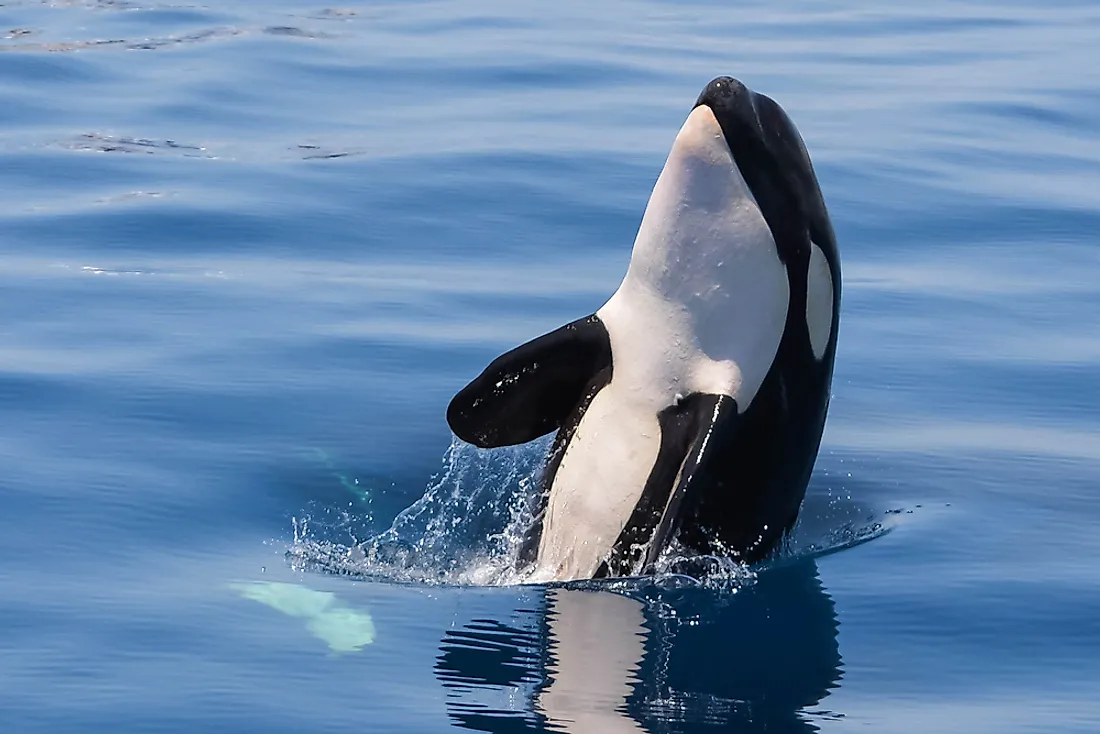Killer Whale Facts: Animals of North America

5. Physical Description
The Killer Whale, also referred to as the Orca Whale, is a 4,000 kilogram killing machine that has survived and evolved through many ages. Spanning to reach an average of 8.7 metres long and some coming close to 5 tons in mass, the Killer whale is among the most frightening carnivores in the sea. Orcas belong to the Oscines family, hence their name, and for many years they have been considered as apex predators, meaning they have no natural predators themselves. The average female orca will live up to 50 years in the wild, while males may often live to reach up to 70 years in age.
4. Diet
Orcas have a palate that can be pleased with a large variety of options when it comes to food. Everything ranging from penguins to smaller whales can feature on their menus. When hunting, a Killer whale can reach up to 48 kilometers per hour, and their mouths are lined with three-inch-long, interlocking teeth, which make them one of the deadliest marine predators. Along with their intimidating speed and lock-tight bites, Orcas hunt together, which increases their chances of catching their goal prey. Comparable to Dolphins in intelligence, it is hard to for their unfortunate prey to outsmart an Orca when they are in pursuit.
3. Habitat and Range
The Killer Whale can be found all over the world. Their range includes the cold waters of the Pacific Northwest, the high latitudes of the Southern Ocean, and the Atlantic alike. Due to their widespread distributions, Killer Whales are considered to be one of the most common large mammals to be observed worldwide, alongside Humans and the Brown Rat. In fact, scientists have a hard time estimating how many Orcas are alive today due to just how far spanning their habitat is. Regional figures are more attainable, and it is estimated that in areas such as the Alaskan waters there are approximately 1,000 whales.
2. Behavior
Orcas are considered to be very social animals when it comes to dealing with other members of their own species. Otherwise, they can be very hostile and aggressive towards others, including other whales, upon whom they often prey. Killer Whales live in groups known as "pods" or "clans" of other Orcas, and these can reach up to 50 bodies per clan. Much like Wild Buffalo on land, the Orca clan setup is very similar in the maritime world. Within clans, babies and mothers usually travel encompassed within a circle of males, who protect them throughout their journeys. These Whales also have similar characteristics akin to cats when it comes to hunting and playing with their food. Much like when a cat will toy with a mouse, Killer Whales are known to toss around and amuse themselves with their food until it dies.
1. Reproduction
At age 11, a female Orca will have finished maturing sexually, and by the age of 13 she will have usually become fertile. The female will remain pregnant for 15 months until it gives birth to its offspring where the clan will communally take care of and watch the baby. The average mother Orca usually has between 4 and 6 babies in her lifetime. These amazing creatures stand out from many other large marine predators for their skillful techniques in hunting and achieving long lives. Indeed, Killer Whales seem to have the perfect combination of brain and ferocity.











